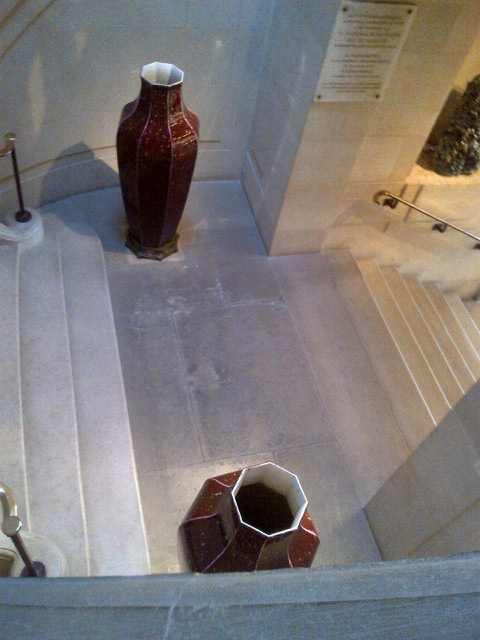Stamped with black lozenge mark on the neck S.98, with the original paper label numbered 205
Each: 27 ½ in (70 cm) highThe production of the Sèvres factory in the 19th century was vast and diverse, and its history during this period reflects many of the changes that affected French society. Among the remarkable accomplishments of the factory was that it stayed continuously at the forefront of European ceramic production despite the myriad changes in technology, taste, and patronage.
The Sèvres factory was founded in 1740 in the town of Vincennes and later re-established in larger quarters at Sèvres in 1756. Louis XV had been an early investor and became its sole owner in 1759. However, the French Revolution brought about change in the ownership of the factory and Alexandre Brongniart was appointed administrator in 1800. This marked a profound shift in its fortunes as the composition for hard-paste porcelain was improved and the production of soft paste was abandoned in 1804. New enamel colours were devised and Brongniart oversaw the development of a new type of kiln that was both more efficient and cost-effective. Much of the output during Brongniart’s times reflected the prevailing Empire taste.
With the advent of Art Nouveau at the end of the 19th century, historicism lost its grip at Sèvres. Forms inspired by nature and often characterised by asymmetry became dominant. The factory was a foremost centre for design reform and produced Art Nouveau wares that were extremely progressive. Simplistic forms and designs were also adopted from Asian ceramic wares, of which the factory held a large collection for references. to refer to designers and artists.
‘Sang-de-Boeuf’ translated as ‘oxblood’, describes the type of glossy, rich, blood-red glaze used on these pair of vases. The effect is produced by a procedure of firing that incorporates copper, a method first discovered by the Chinese of the Ming dynasty, during the reign of Wanli (1573-1620). The process was at first difficult to control, but it had been mastered by the time of Kanxi (1661-1722) and Qianlong (1736-96) in the Qing Dynasty, and ‘chuihong’ or ‘blown red’ glaze ware, became popular. This type of porcelain was soon imitated in Europe, especially in the porcelain factory at Sèvres, which produced a substantial amount of ‘sang-de-boeuf’ in the late 19th-century. ‘Fond Flammé’ refers to the speckled finish of the glaze.
The donations to Sèvres from André Billequin in 1888, Monsieur Frandon and Mme de la Voltais in May 1894, included a large number of pieces of ‘sang-de-boeuf’ porcelain from China. These pieces served as models to the laboratory of the factory for them to eventually perfect and reproduce the same glaze on their pieces. Due to the larger size of these vases and the presence of the numbered paper label, it is quite probable that these were made for display at an exhibition in Paris.
A pair of similar vases may be found in the Musée Nationale de Céramique de Sèvres.



















